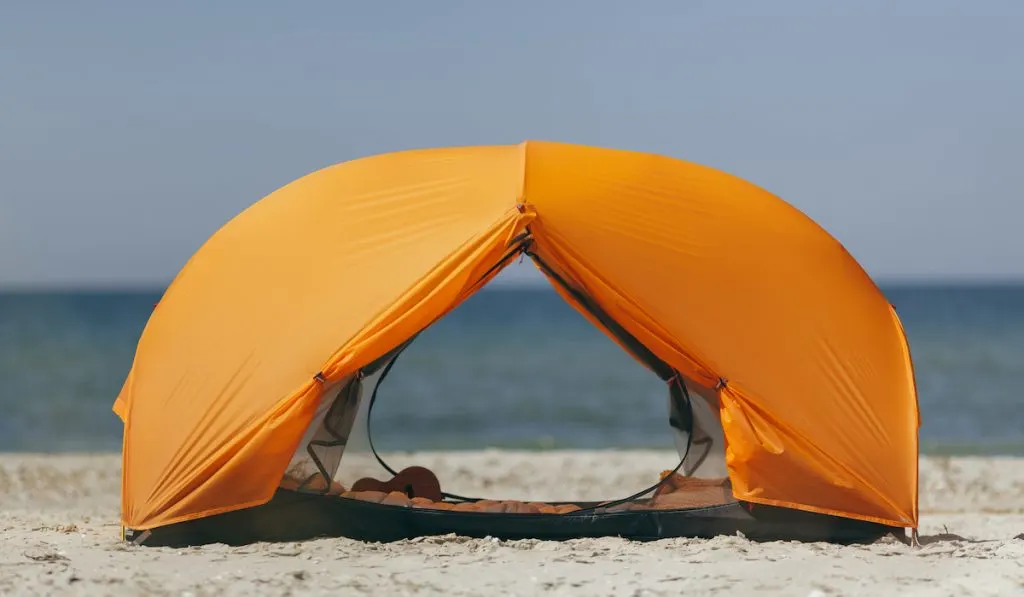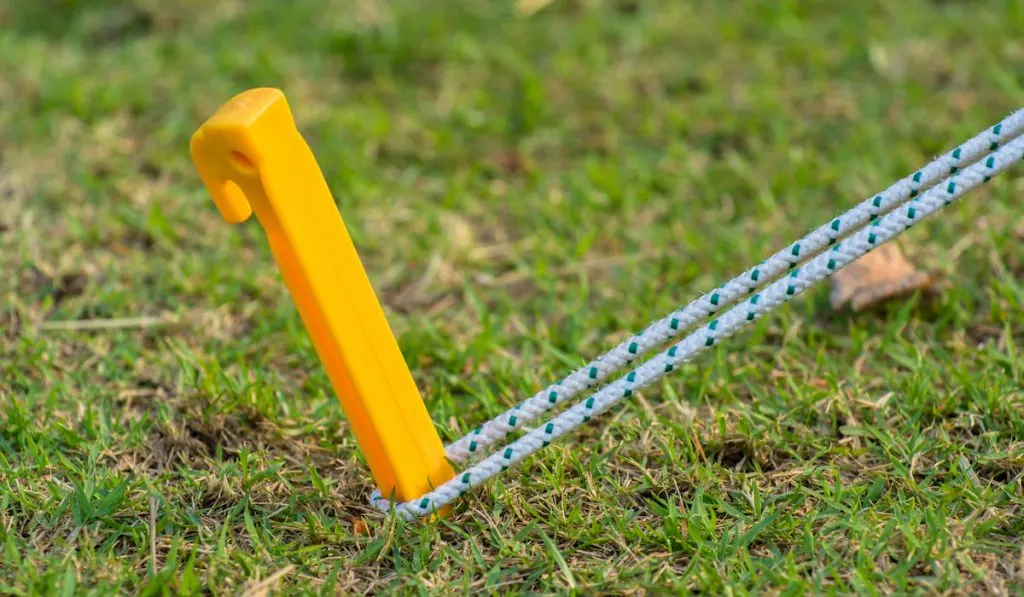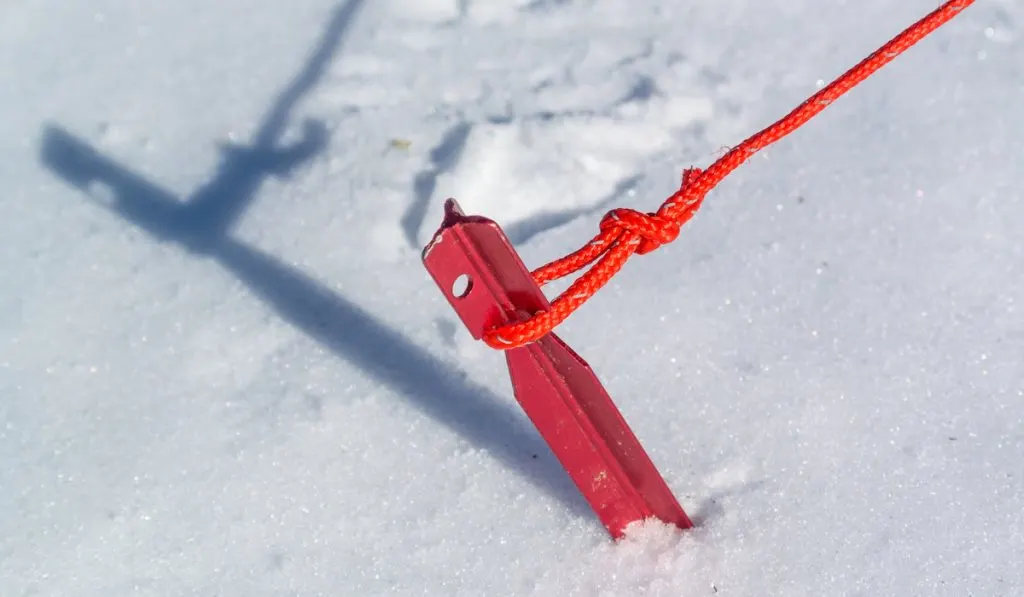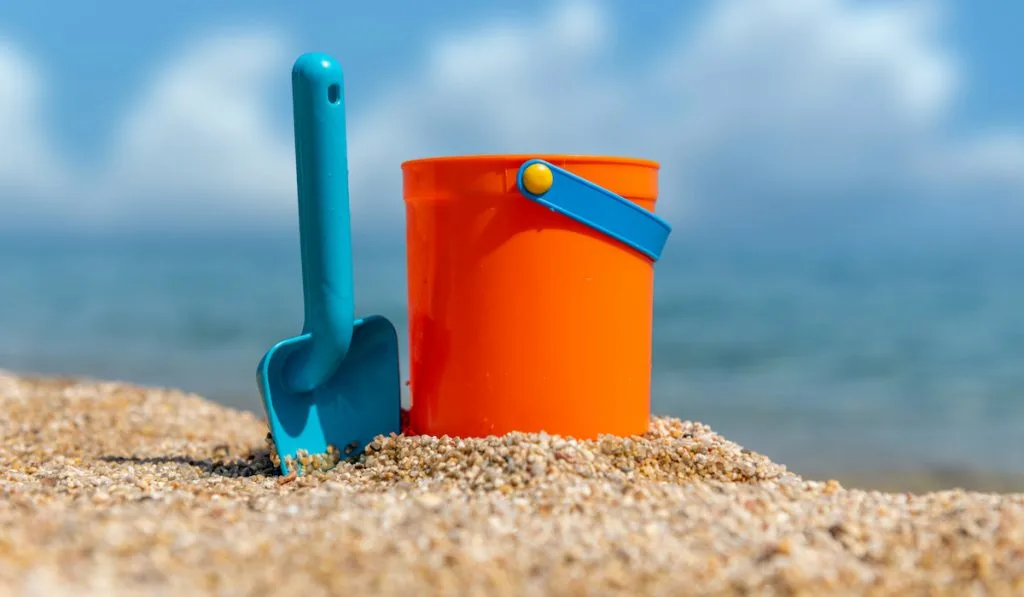When you want to set up a camping tent or a canopy tent for your daytime vacation at the beach, all is well until it gets windy and the structure threatens to fall apart, or worse, get carried away by the wind.
To make it worse, the sand is never strong enough to hold down the tents on its own. To be on the safe side, you need to know how to firmly anchor your tents to avoid the risk of getting dismantled and blown away by the wind.
So, how do you ensure that your tent has a proper foundation and is safely secured in the sand? This article will give you a detailed list of tried and verified tips to help you set up your tent safely and quickly so you can enjoy your entire beach trip.

Proper Setup
Before you commit to setting up the tent, there are a few things to consider to get it set up correctly. First, choose the right spot to set up your tent.
Whether on sandy beaches or a fairly rocky beach, certain positions are not as prone to strong winds. Always be aware of the wind direction to best position the tent. Never take shelter in tents during heavy winds and storms. Lightning can strike tents too.
You also need to carefully go through the setup instructions before assembling the tent to get all the details of how you need to set up the tent. Improper installation of the tent means that its structural integrity is significantly weakened and it will be more susceptible to even the slightest wind.
It’s also a lot easier to secure the tent with the proper installation process, even if it is not strong enough to face the wind.
Bury the Tent Stands in the Sand
Instead of worrying about getting weights and additional anchors for your tent, you can also bury the tent stands in the sand as a form of providing extra support. All you need to do is dig a few inches into the sand and set the tent stands in the trench, then put wet sand over the stand to give it firm support.
To work with this method, you need precision and clear communication when setting up the stands to avoid ending up with some stands getting buried deeper and becoming shorter than others. To effectively handle this, you can put uniform markers to the pillar poles of the tent, marking the length each pole is supposed to stand deep in the sand.
You also need to be cautious not to bury the tent too deep that it gets difficult to use.

Use Tent Pegs
Conventional tents are packaged with their pegs with their corresponding legs and poles. However, you should note that most pegs are designed for use on the regular earth and might not be as effective and stable when shifted to be used on the sand.
Therefore, always be specific with the tent pegs you need when camping out on the beach, and go for the sand pegs. These will give your tent more stability by themselves.
If you are not satisfied with the support offered by the pegs alone, you are always free to add on extra weight on the pegs with more anchors or rocks till you are satisfied that the added weight will securely hold the tent in place.
Since the tent pegs are also available in various shapes and sizes, the preference for pegs will greatly be inspired by your own testing and the type of tent.
Weigh Down with Water Bags
Using water bags is also a proven way of holding down tents and are available in various sizes depending on how much volume they can hold.
However, your water bag choice for holding down a tent will significantly rely on the type of tent you want to hold down. I mean, you don’t want to purchase water bags that won’t be able to hold down your heavy tent effectively.
Water bags can always be deflated after use for ease of travel. Furthermore, they come with straps that ensure proper attachment to the tent’s poles for adequate support.

Tie the Supports with Proper Knots
No matter how elaborate your weighing down strategy is, everything is meaningless without the right kind of knots to tie everything together. Therefore, you need to be extra careful with the type of knots you use to avoid knots that quickly loosen up.
There are plenty of tutorials for applying tight knots, with the most famous knot being the taut-line hitch. This knot creates an adjustable loop that fastens up and tightens whenever under pressure.
Weigh Down with Sand Bags
Sandbags come in handy as additional weight fixtures to help hold down your tent whenever the need arises. Sandbags are proven to be among the most effective weight additions to hold down a beach tent. With the use of sandbags, you won’t need to dig deep into the sand to set the tent poles at a steady level.
After choosing a setup spot and setting up the tent, the concern should be giving the tent firm support with the sandbags and tying down the sandbags around the tent’s poles to give the best form of support. However, you may need to get more sandbags than is conventionally needed to provide more support with stronger wind currents.

Use Sand Buckets
Like sandbags, sand buckets are a tried, tested, and verified method for holding down beach tents. Unlike any other option, using sand buckets is quite an easy option, from carrying the buckets to the specified location on the beach, filling them up with sand, and even using them as support structures for the tents.
Once you fill them with sand, use cords to tie them around the tent poles for extra support, and they will stay firm no matter the intensity of the wind blowing through, making it the most excellent yet affordable way to keep the tents secure at the beach.
Besides, if you don’t end up using them, you don’t have to fill up the buckets with sand and they can serve you in a multipurpose manner as storage for whatever you feel you need to keep while on the beach.
Fine Tuning
Fine tuning involves applying some adjustments to the tents to make them more resistant to wind stress. Some tents have additional side panels that help keep away particles of flying sand and even wind. However, if your tent faces much pressure from blowing wind, it is always advisable to roll up the side panels to reduce the surface area of the tent coming in contact with the wind.
For those tents with adjustable vents, it is recommended that the vents be kept open at all times, unless there are adverse weather conditions like rain, to reduce the stress the wind can impose on a steady standing tent.

Use Anchors and Tent Weights
Through their looks, tent anchors are more official versions of sandbags. Anchors borrow the idea of weighing down the tent using sand; only anchors are much easier to attach and support the poles.
On the other hand, tent weight can be filled with pretty much anything that provides additional weight and support to the tent poles, from water, rocks, snow, sand, earth, and even concrete. Weight bags are also easy to work with, thanks to the ease of loading and offloading them.
Depending on what you are willing to weigh down your tent with, tent weight will often come in different shapes and sizes to best fit their potential materials for loading. However, you will have to endure a little bit of stress carrying around the weights to their desired destinations around the tent.
Support with PVC Pipes with Cement at the Bottom
PVC pipes with cement slabs at the bottom stand as an anchor to the tent poles. However, a few provisions must be met to have the best PVC anchors for your tent.
First, you need to ensure that the ideal PVC for use is slightly larger in diameter than the tent poles. You should also have a cemented base to hold the pipes in place to support the tent poles.
Once the cemented PVC pipes are fully hardened, and in good shape, you can comfortably slide in the tent poles for their extra support, ensuring that the tent stands still against the soaring wind.
Conclusion
If you want to enjoy a good day at the beach without worries of your tent being blown away, then you need to invest wisely in how you are going to provide adequate support for your tent.
I hope the list above guides you to find the ultimate support system for your beach tent.
Resources
- https://bestbeachaccessories.com/how-to-anchor-down-a-canopy-at-the-beach/
- https://www.itravelnet.com/travel-blog/under-the-sun-6-simple-tips-to-prevent-beach-canopy-from-blowing-away/
- https://americantent.com/blogs/best-in-tents/the-four-best-ways-to-anchor-a-canopy-on-the-beach
- https://tentadvice.com/how-do-you-keep-a-canopy-from-blowing-away-at-the-beach/
- https://lawngarnish.com/how-do-you-keep-a-canopy-from-blowing-away-at-the-beach/
- https://www.outdoorgeeky.com/how-to-keep-the-canopy-from-blowing-away-at-beach/
- https://bestbeachaccessories.com/how-to-anchor-down-a-canopy-at-the-beach/
- https://sunnydazedecor.com/blogs/news/8-tips-to-help-keep-your-pop-up-canopy-from-blowing-away
